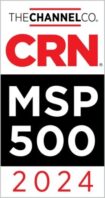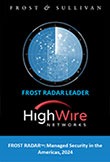Guest Blogger: Josh Bode, High Wire Intern
How can managers be more effective with employees across generations and best communicate with those from different backgrounds and generations? It is a common challenge today in the workplace that has managers scratching their heads wondering how best to approach the next generation of workers.
“Be kind, don’t judge, and have respect for others,” said Charles Hughes, High Wire’s Chief Operating Officer quoting Jasmine Guinness in a recent WorkMarket webinar called, How to Manage your Talent in 2020. “If we can all do this, the world would be a better place. The point is to teach this to the next generation.”
Hughes focused his part of the webinar on how to be sympathetic towards all generations, how managers can manage most effectively across generations, and the best way to communicate with people from different generations in the workplace.
The following bullet point list is a description he provided to characterize those in the workforce or about to enter the workforce.
-
- Baby boomers (ages 51-72, 75 million people) – moral authority, “me generation,” radio/television, stay at home mom
- Gen X (36-50, 65 million) – doers, latch key kids, mothers entering the workforce
- Gen Y/Millennials (21-35, 73 million) – blended families (divorces), digital media
- Gen Z (under 21, 90 million) – always on generation, always had technology
Each generation also has certain habits when it comes to office hours. Baby boomers were always expected to be in the office, whereas Gen X has fewer office hours. They first started working from home, and do not always value the time lost on the commute and distractions that can occur at the workplace. Taking this idea further, Millennials and Gen Z are always available, but not in the same sense as Baby Boomers. They do not interact much in person, but use media sources such as texting, phone calls, and FaceTime to communicate with coworkers.
The question now is, how can managers successfully manage this wide range of traits? Hughes listed 3 ways: communication, technology, and flexibility.
Communication:
It is necessary to use different mediums to communicate with different types of people. Workers from the Baby Boomer generation like to communicate through detailed emails, while Millennials would rather communicate through social media. But, even when using different platforms to communicate with different coworkers, it is essential to keep and send a consistent message.
Technology:
Technology is new to Baby Boomers, was assimilated by Gen X, and has always been a part of life for Millennials. So, managers must leverage technology across the generations. Additionally, technology attracts new employees from Gen Z.
Flexibility:
Managers should manage output and energy, not time. The typical 9 to 5 workday is not always the best way to get things done. Letting individual workers choose what works best for them while still being able to get all their work done is sometimes more effective. Finally, managers need to adjust their styles, and not make their employees change theirs.
Hughes wrapped up the webinar by touching on agile leadership. Two subpoints are balancing centralized and decentralized leadership, and separating people leadership and operational control.
Chris Gera (EVP/Managing Director of Service Council) and Bridget Quinn Kerchner (VP, Customer Experience of WorkMarket) also contributed to the webinar.
[Author’s perspective]
As a high school senior, this webinar made me think about my experience in searching for a college to attend. I am interested in going into sports broadcasting, so a school that has a good studio and technology to gain experience was very important to me. This relates to the comment Hughes made about how technology attracts workers from my generation, Gen Z. My current top schools were very impressive to me not only because of a good course path, but access to top tier technology as well.









Leave a Reply